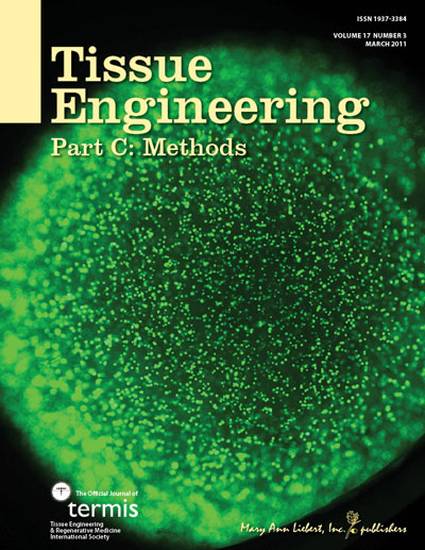
Article
A Novel Bioreactor for the Dynamic Stimulation and Mechanical Evaluation of Multiple Tissue-Engineered Constructs
Tissue Engineering Part C: Methods
(2011)
Abstract
Systematic advancements in the field of musculoskeletal tissue engineering require clear communication about the mechanical environments that promote functional tissue growth. To support the rapid discovery of effective mechanostimulation protocols, this study developed and validated a mechano-active transduction and evaluation bioreactor (MATE). The MATE provides independent and consistent mechanical loading of six specimens with minimized complexity and hardware. The six individual chambers accurately applied static and dynamic loads (1 and 10 Hz) in unconfined compression from 0.1 to 10 N. The material properties of PEG hydrogels and bovine cartilage were measured by the bioreactor, and these values were within 10% of the values obtained from a standard single-chamber material testing system. The bioreactor was able to detect a one-day 12% reduction (2 kPa) in equilibrium modulus after collagenase was added to six collagenase sensitive PEGDA hydrogels (p=0.03). By integrating dynamic stimulation and mechanical evaluation into a single batch-testing research platform, the MATE can efficiently map the biomechanical development of tissue engineered constructs during long-term culture.
Disciplines
Publication Date
March, 2011
DOI
https://doi.org/10.1089/ten.TEC.2010.0381
Citation Information
Trevor J. Lujan, Kyle M. Wirtz, Chelsea S. Bahney, Steven M. Madey, et al.. "A Novel Bioreactor for the Dynamic Stimulation and Mechanical Evaluation of Multiple Tissue-Engineered Constructs" Tissue Engineering Part C: Methods Vol. 17 Iss. 3 (2011) p. 367 - 374 Available at: http://works.bepress.com/trevor_lujan/6/
